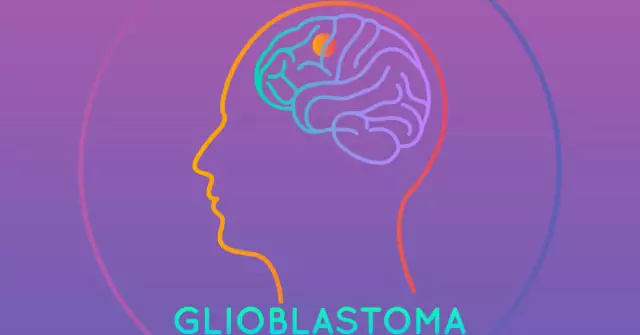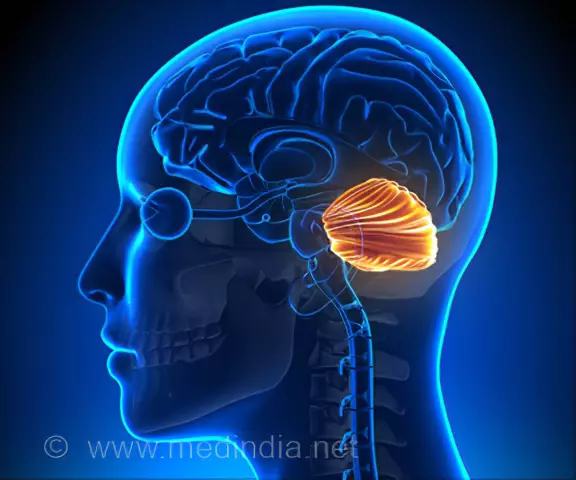- Author Rachel Wainwright [email protected].
- Public 2023-12-15 07:39.
- Last modified 2025-11-02 20:14.
Glioblastoma

Glioblastoma is the most common and one of the most insidious brain tumors.
Glioblastoma of the brain: features, etiology, classification, diagnosis
The insidiousness of brain glioblastoma lies in the fact that its growth into the brain tissue occurs rapidly. Most often it is localized in the forehead and temples; its dislocation is always located in the brain.
The etiology (cause) of the development of brain glioblastoma has not been reliably established to date. The hypothesis about the negative impact of mobile communications in its appearance was not confirmed. At the same time, the following risk factors for the development of glioblastoma were noted:
- men get sick more often than women;
- most often the disease is typical for people aged 40 to 60 years;
- regular exposure to ionized radiation or certain chemicals (for example, polyvinyl chloride).
In accordance with the classification of the World Health Organization (WHO), glioblastoma was assigned the 4th degree of malignancy.
There are three types of glioblastomas:
- giant cell,
- multiforme,
- gliosarcoma.
To confirm the diagnosis of brain glioblastoma, modern informative and high-precision examination methods are used - magnetic resonance imaging (MRI) with the introduction of a contrast agent, as well as SPEKT and PET scanning.
It was noted that in some cases the nature of the resulting image may not correspond to the severity of the disease. The final analysis in the diagnosis of glioblastoma is a stereotaxic biopsy of the neoplastic cells and their postmortem examination.
Glioblastoma symptoms
It is obvious that the development of brain glioblastoma is accompanied by intense headache. Patients complain of visual impairment, numbness of the limbs, drowsiness. An increase in intracranial pressure, dizziness was noted. A number of patients had epileptic seizures. Relatives of a person with glioblastoma notice a memory disorder and personality change. The tragedy of the situation is that before the first symptoms appear, glioblastoma grows to hypertrophied sizes.
Modern approach to the treatment of glioblastoma
Glioblastoma treatment consists of three stages:
surgical intervention in order to completely remove the neoplasm
- a combination of radiation therapy and drug treatment;
- chemotherapy to maintain the effect.

Only complete removal of glioblastoma can ensure the duration and quality of life of the patient. The difficulty of this stage is due to the lack of clear visible boundaries of brain glioblastoma against the background of inflamed and edematous surrounding tissues.
In the recent past, radical removal was impossible, since there was an extremely high risk of touching the functional areas of the brain during neurosurgical intervention, causing paralysis, etc. Today, for the complete excision of glioblastoma, a contrast agent is used - 5-aminolevulinic acid. The operation is performed using a special microscope with a blue light source. Tumor cells are visualized - they begin to glow, which makes it possible for the surgeon to remove it without leaving any residue.
The subsequent combined treatment of glioblastoma lasts about 1.5 months. For five days a week throughout this period, the patient receives dosed radiation, and Temodal receives the drug daily without interruption.
A month after the end of radiotherapy, Temodal's reception is resumed. The maintenance course consists of 6 stages, each of which lasts 5 days. The interval between stages is 23 days.
In about 10% of cases, there is a recurrent course of brain glioblastoma. Since 2005, Avastin has been successfully used to treat such patients.
YouTube video related to the article:
The information is generalized and provided for informational purposes only. At the first sign of illness, see your doctor. Self-medication is hazardous to health!






